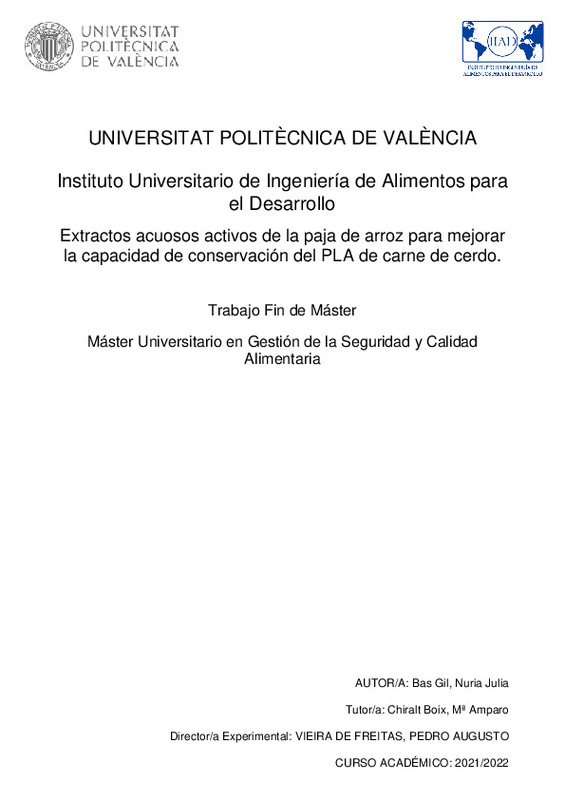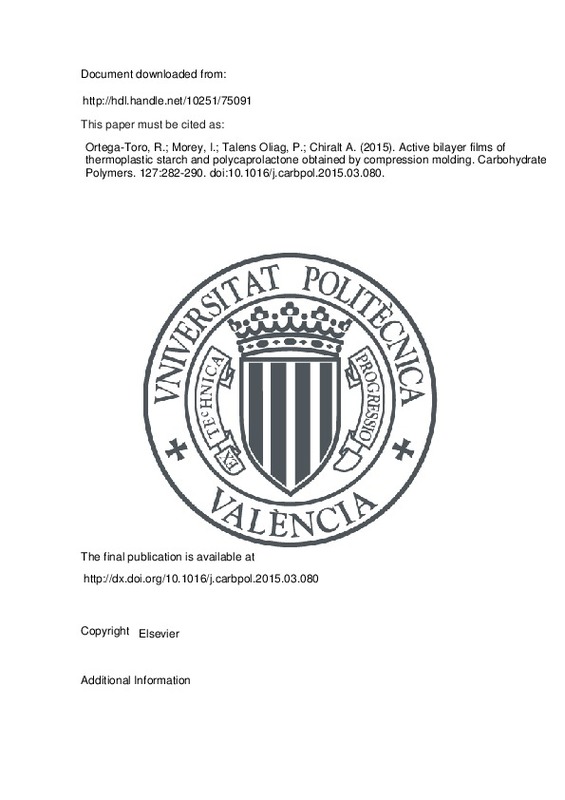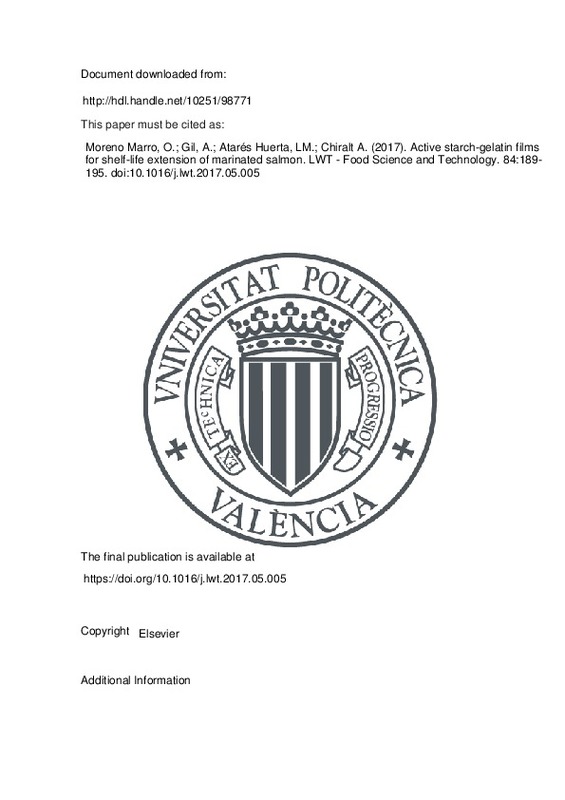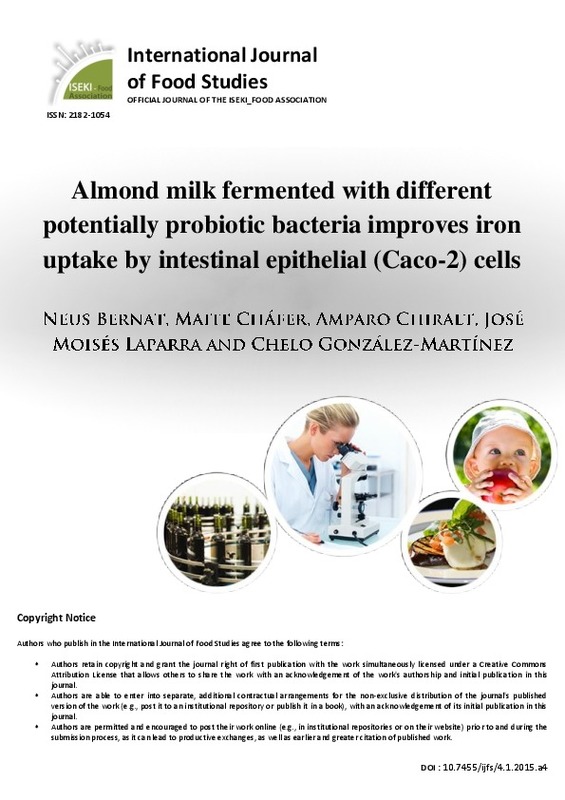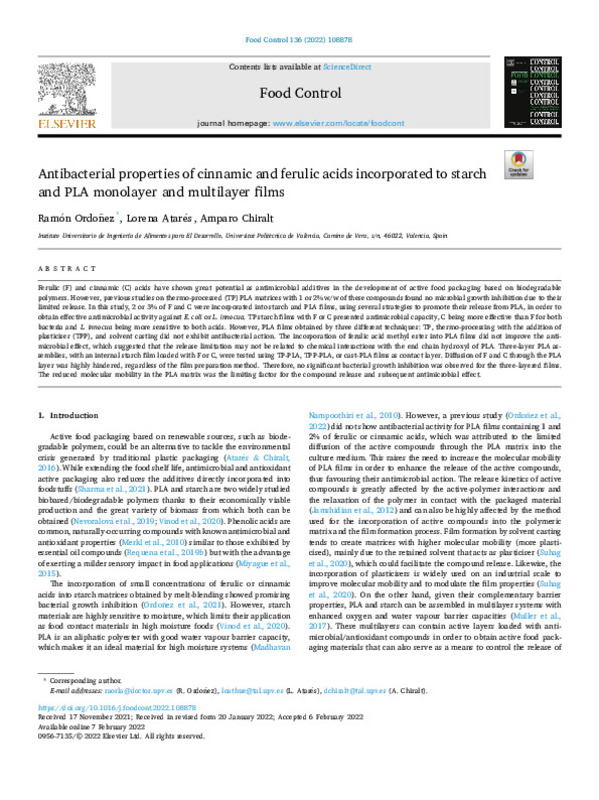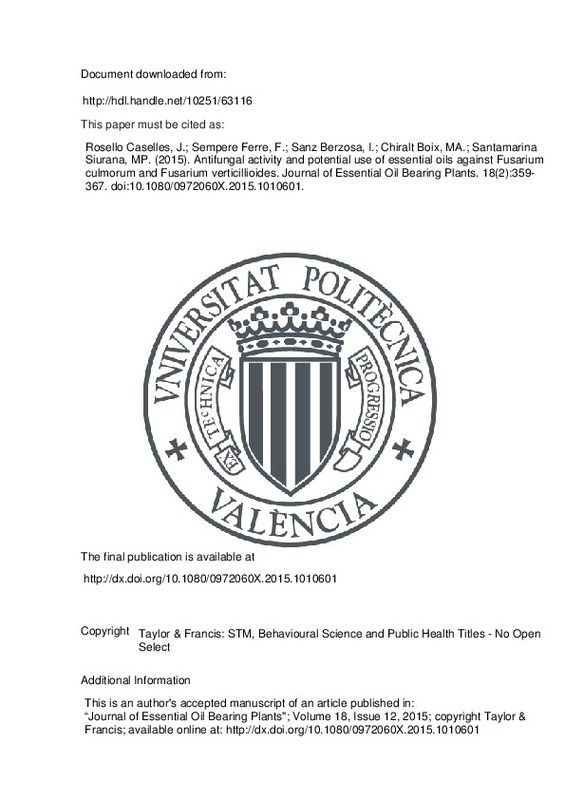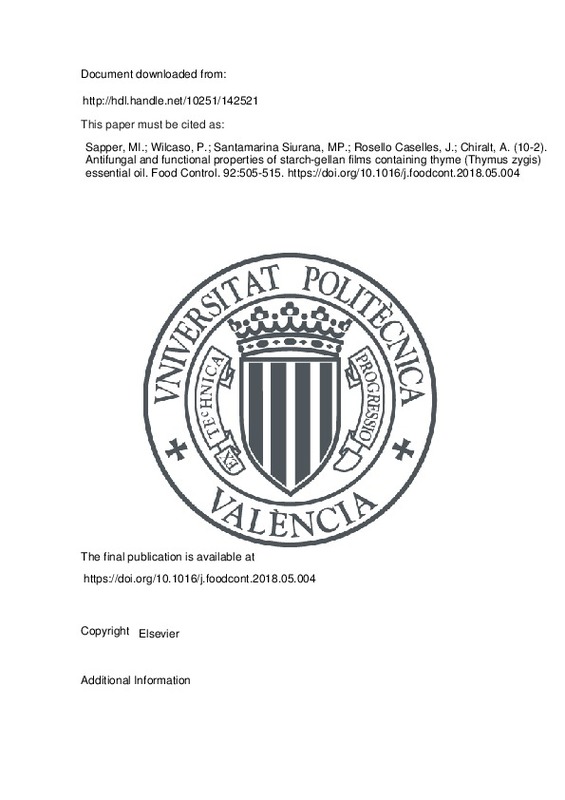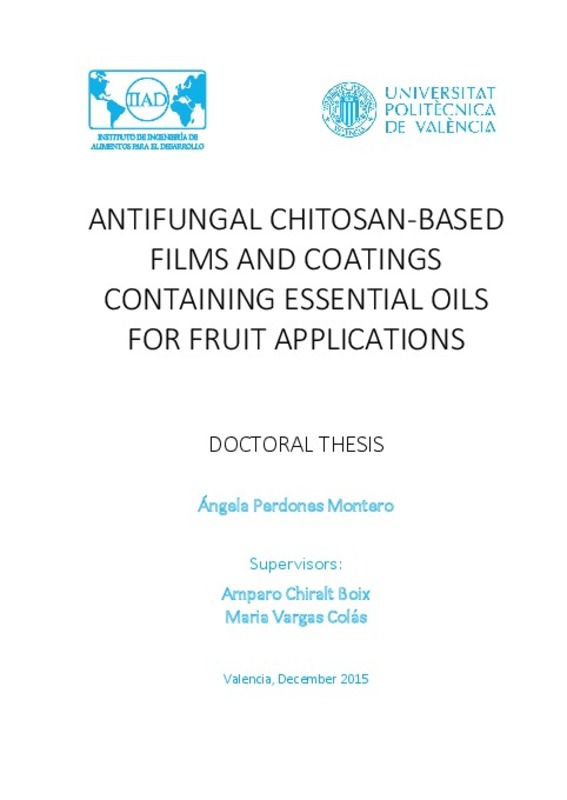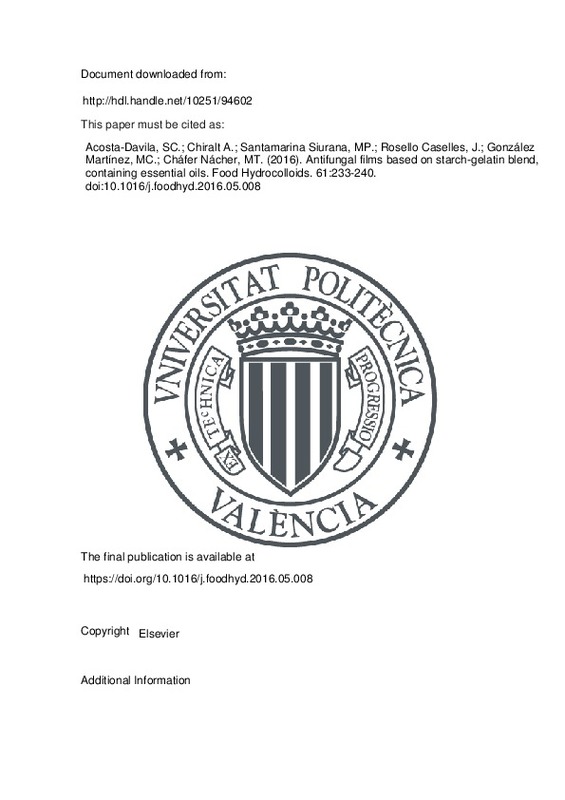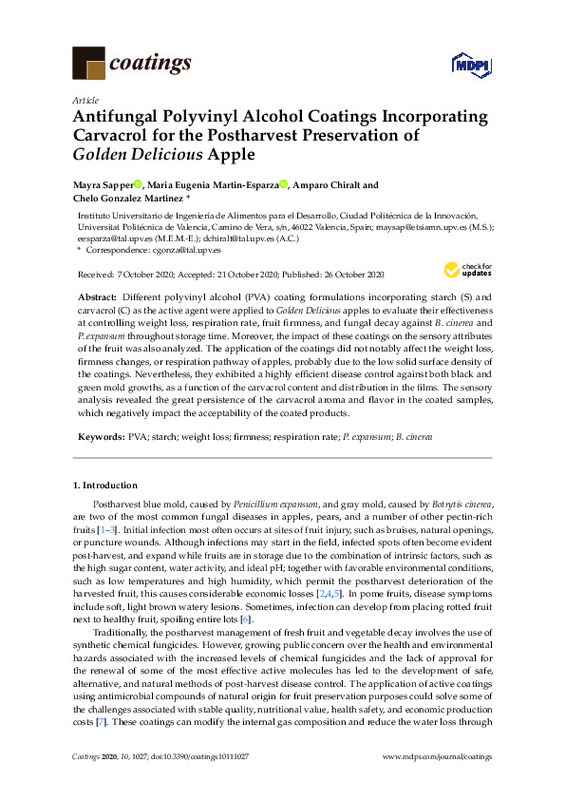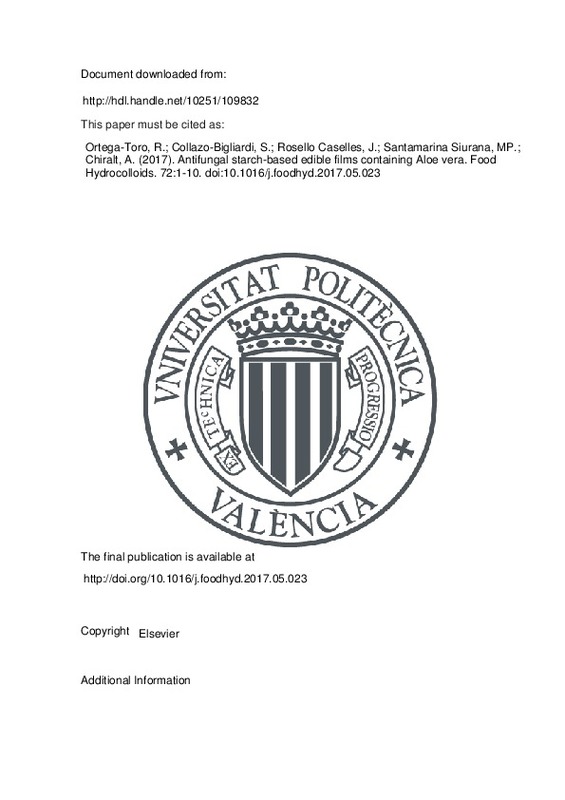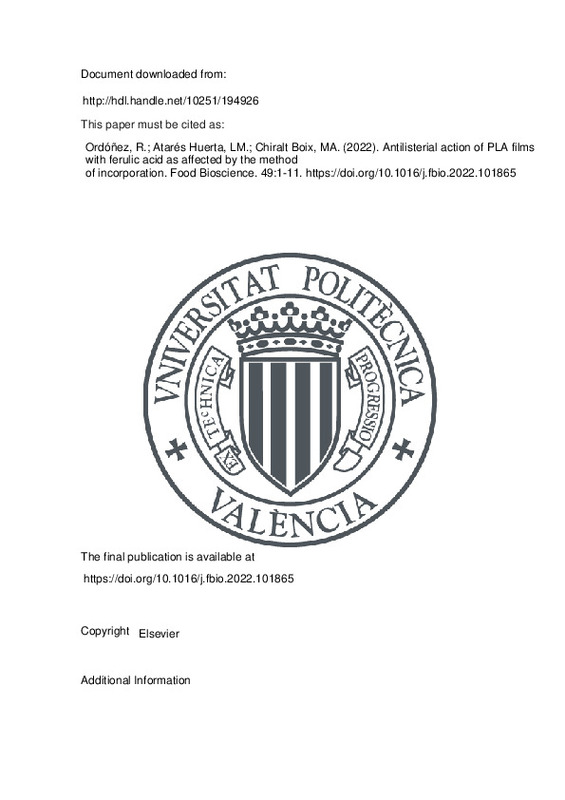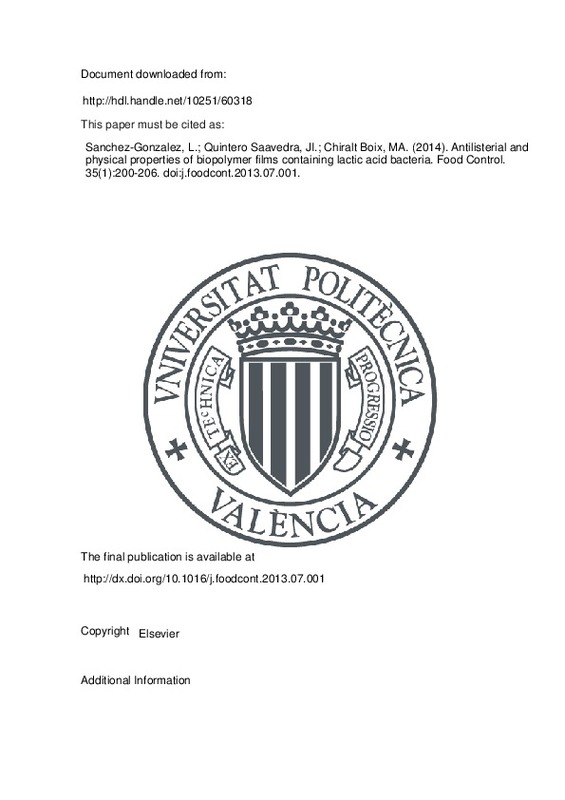

Listar por autor "Chiralt Boix, Mª Amparo"
RiuNet: Repositorio Institucional de la Universidad Politécnica de Valencia
- RiuNet repositorio UPV
- :
- Listar por autor
JavaScript is disabled for your browser. Some features of this site may not work without it.
Buscar en RiuNet
Listar
Mi cuenta
Ayuda RiuNet
Admin. UPV
Listar por autor "Chiralt Boix, Mª Amparo"
Mostrando ítems 1-20 de 284
-
Molinero Fernández, María (Universitat Politècnica de València, 2022-11-21)[ES] La paja de arroz es un residuo agroalimentario cuya revalorización es necesaria para reducir su impacto ambiental y aprovechar su potencial composicional en el marco de la economía circular. En este trabajo se han ...
-
Bas Gil, Nuria Julia (Universitat Politècnica de València, 2022-11-02)[EN] Rice straw is an agro-industrial lignocellulosic residue produced worldwide in large quantities, highly rich in phenolic compounds with bioactive properties. In this study, aqueous extracts of this residue have been ...
-
Ortega-Toro, Rodrigo; Morey, Iris; Talens Oliag, Pau; Chiralt, A. (Elsevier, 2015-08-20)[EN] Bilayer films consisting of one layer of PCL with either one of thermoplastic starch (S) or one of thermo-plastic starch with 5% PCL (S95) were obtained by compression molding. Before compression, aqueoussolutions of ...
-
Vieira-De Freitas, Pedro Augusto; González Martínez, María Consuelo; Chiralt, A. (Springer-Verlag, 2023-11)[EN] Aqueous extracts from rice straw (RS), using ultrasound-assisted reflux heating extraction (USHT) and subcritical water extraction (SWE), under two process conditions (160 degrees C, 7 bars; and 180 degrees C, 11 ...
-
Moreno Marro, Olga; Gil, Agueda; Atarés Huerta, Lorena María; Chiralt, A. (Elsevier, 2017)[EN] Biodegradable active films were obtained by casting, using glycerol plasticized oxidized corn starch (OS) and bovine gelatine (BG) blends (1:1 mass ratio), with and without ethyl lauroyl arginate (LAE) as antimicrobial ...
-
Hernandez-Garcia, Eva; Vargas, Maria; Chiralt, A. (MDPI AG, 2022-10)[EN] Bilayer films of cassava starch-based (with 10% gellan gum) and polylactic (PLA): Poly(3- hydroxybutyrate-co-3-hydroxyvalerate) (PHBV) polyester blend (with 75% PLA) monolayers were obtained by melt-blending and ...
-
Turrero Álvarez, Rosana (Universitat Politècnica de València, 2020-09-08)[ES] El envasado activo, mediante el uso de polímeros biodegradables/compostables, es una estrategia innovadora para alargar la vida útil de los alimentos, manteniendo su calidad y seguridad. La incorporación de compuestos ...
-
Alonso Collado, Paula (Universitat Politècnica de València, 2024-07-17)[ES] La paja de arroz es un residuo agroalimentario que contiene compuestos de gran interés como la celulosa, y cuya revalorización es fundamental en el marco de la economía circular. En el presente trabajo se ha obtenido ...
-
Cofelice, M.; Cuomo, F.; Chiralt, A. (MDPI AG, 2019-09-04)[EN] The necessity of producing innovative packaging systems has directed the attention of food industries towards the use of biodegradable polymers for developing new films able to protect foods and to extend their ...
-
Bernat Pérez, Neus; Cháfer Nácher, María Teresa; Chiralt, A.; Laparra Llopis, José Moisés; González Martínez, María Consuelo (ISEKI Food Association (IFA), 2015)[EN] New fermented almond milks were developed by using different potentially probiotic bacteria in order to cover the current demand for health-versatile non-dairy products. An in vitro digestion/Caco-2 cell model was ...
-
Ordóñez, Ramón; Atarés Huerta, Lorena María; Chiralt Boix, Mª Amparo (Elsevier, 2022-06)[EN] Ferulic (F) and cinnamic (C) acids have shown great potential as antimicrobial additives in the development of active food packaging based on biodegradable polymers. However, previous studies on thermo-processed (TP) ...
-
Rosello Caselles, Josefa; Sempere Ferre, Francisca; Sanz Berzosa, Isidora; Chiralt Boix, Mª Amparo; Santamarina Siurana, Mª Pilar (Taylor & Francis: STM, Behavioural Science and Public Health Titles - No Open Select, 2015-03)Essential oils of bay leaf, cinnamon, clove and oregano were tested in vitro and oregano essential oil in vivo, against two foodborne fungi belonging to the dominant mycobiota of stored rice, Fusarium culmorum and Fusarium ...
-
Sapper, Mayra Ileana; Wilcaso, Paola; Santamarina Siurana, Mª Pilar; Rosello Caselles, Josefa; Chiralt, A. (Elsevier, 2018-10)[EN] Films based on starch-gellan blends at 9:1 and 8:2 ratios containing emulsified or lecithin encapsulated thyme (Thymus zygis) essential oil (EO) (0.25 or 0.5 g/g polymer), were obtained by casting method and characterized ...
-
Perdones Montero, Ángela (Universitat Politècnica de València, 2016-12-15)[EN] Chitosan films and coatings have been obtained, by incorporating different essential oils (EO) and using different homogenization conditions of the film forming emulsions, in order to obtain antifungal materials for ...
-
Acosta-Davila, Sandra Cecilia; Chiralt, A.; Santamarina Siurana, Mª Pilar; Rosello Caselles, Josefa; González Martínez, María Consuelo; Cháfer Nácher, María Teresa (Elsevier, 2016)[EN] The antimicrobial activity of essential oils (EO) is very well-known and it has been reported that incorporating them into edible films based on biopolymers extends the food's shelf-life. In this study, cinnamon, clove ...
-
Sapper, Mayra; Martín-Esparza, M.E.; Chiralt Boix, Mª Amparo; González Martínez, María Consuelo (MDPI AG, 2020-11)[EN] Different polyvinyl alcohol (PVA) coating formulations incorporating starch (S) and carvacrol (C) as the active agent were applied to Golden Delicious apples to evaluate their effectiveness at controlling weight loss, ...
-
Ortega-Toro, Rodrigo; Collazo-Bigliardi, Sofía; Rosello Caselles, Josefa; Santamarina Siurana, Mª Pilar; Chiralt, A. (Elsevier, 2017)[EN] Aloe vera gel, analysed as to its antifungal properties against six fungi causing plant diseases, was found to be most effective against Fusarium oxysporum. It was included in different ratios in starch based films ...
-
Ordóñez, Ramón; Atarés Huerta, Lorena María; Chiralt Boix, Mª Amparo (Elsevier, 2022-10)[EN] Previous studies demonstrated that polylactic acid (PLA) films with ferulic acid (F) obtained by melt blending did not release the active compound to exert effective antibacterial action. To solve this problem, different ...
-
Sanchez-Gonzalez, L.; Quintero Saavedra, Jorge Ivan; Chiralt, A. (Elsevier, 2014-01)Novel biopolymer films were developed and used to control Listeria innocua in an artificially contaminated synthetized medium. Two hydrocolloids, sodium caseinate (NaCas) and methylcellulose (MC), and two bacteriocin-producing ...
-
Sánchez-González, Laura; Cháfer, Maite; Hernández Pérez, Manuel; Chiralt, A.; González-Martínez, Chelo (Elsevier, 2011-08)Antimicrobial films were prepared by incorporating different concentrations of bergamot (BO), lemon (LO) and tea tree (TTO) essential oils (EO), into chitosan (CH) and hydroxypropylmethylcellulose (HPMC) films. Their ...
Mostrando ítems 1-20 de 284

Universitat Politècnica de València. Unidad de Documentación Científica de la Biblioteca (+34) 96 387 70 85 · RiuNet@bib.upv.es



